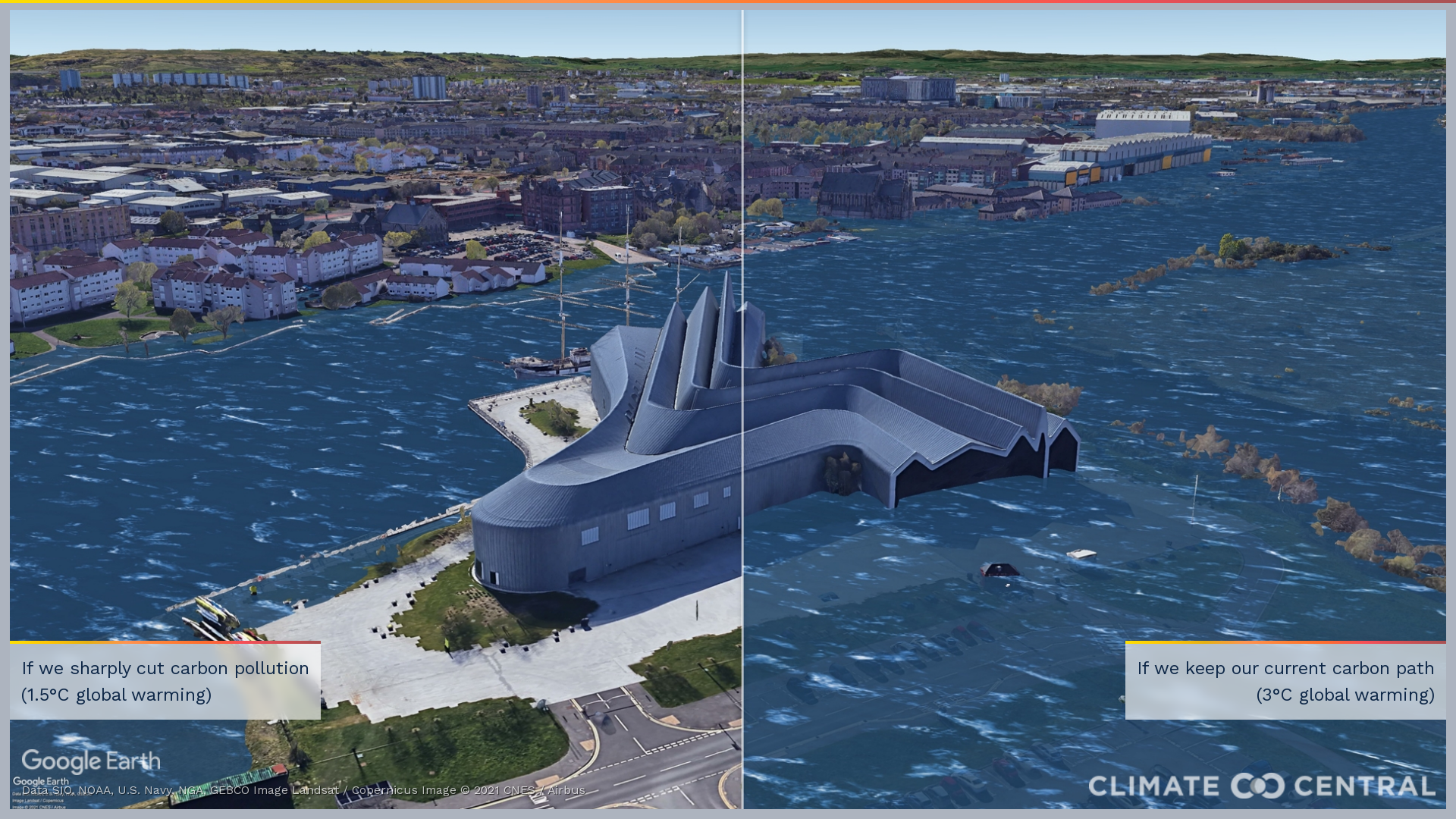Animated models show nearly 200 coastal cities drowned by rising sea levels
Climate Central unveil what 196 cities will look like if global temperatures continue to increase
Your support helps us to tell the story
From reproductive rights to climate change to Big Tech, The Independent is on the ground when the story is developing. Whether it's investigating the financials of Elon Musk's pro-Trump PAC or producing our latest documentary, 'The A Word', which shines a light on the American women fighting for reproductive rights, we know how important it is to parse out the facts from the messaging.
At such a critical moment in US history, we need reporters on the ground. Your donation allows us to keep sending journalists to speak to both sides of the story.
The Independent is trusted by Americans across the entire political spectrum. And unlike many other quality news outlets, we choose not to lock Americans out of our reporting and analysis with paywalls. We believe quality journalism should be available to everyone, paid for by those who can afford it.
Your support makes all the difference.Fully imagining the tangible consequences of the ongoing climate crisis and human-driven global warming isn’t always an easy feat. The destruction of ecosystems, the extinction of species and rising sea levels aren’t always easy to conjure in the mind’s eye.
But now, the future that global warming will create is right before our eyes — thanks to animated models of nearly 200 coastal cities from climate researchers.
Climate scientists with Climate Central have curated a collection of animated models showing us what 196 cities will look like if global temperatures continue to increase, causing sea levels to rise.

For Ben Strauss, chief scientist for Climate Central, said these images show the legacy we’re leaving for future humans.
“These images are what we sign up for today,” Mr Strauss told The Independent. “It’s about our legacy. What future are we putting in the pipeline?”
The models show two possibilities side-by-side: the results if emissions are reduced and the Earth warms only by 1.5C, and the results if emissions continue to increase and the Earth warms to 3C or beyond.
Modelled scenes include the world’s tallest building — the Burj Khalifa in Dubai — flooded and the entirety of the Plaza de la Catedral in Havana, Cuba submerged in water.

A 1.5C increase in global temperatures is the upper warming limit of the Paris Agreement, set to avert the most harmful consequences of the climate crisis. Experts project the planet will be locked into a 1.5C increase by 2029 if emissions — particularly those from fossil fuels — aren’t immediately reduced.
This summer, the global average temperature temporarily surpassed 2C, above pre-industrial levels for the first time since records began.
Global warming causes a rise in sea levels by gradually melting ice sheets and causing seawater to expand, according to NASA. The regions that rising sea levels will hurt the most include the US eastern coast and Gulf coast, Asia and any islands.

The models do not necessarily predict how long the rise will take. The results won’t be immediate, either — the projected sea level rises in these models could take hundreds of years. Instead, the models demonstrate the eventual and inevitable future sea levels projected for different warming scenarios, according to Mr Strauss.
“Today’s sea level is not close to caught up to how much warming we have already caused,” Mr Strauss said. “If the planet stopped warming today, we would probably see around five more feet of sea level rise eventually. But each year we keep putting carbon in the atmosphere we’re increasing the amount of sea level that we’re committed to.”

For Mr Strauss, the most poignant model in the collection is Dubai’s, thanks to the striking imagery of the partially flooded Burg Khalifa and the city’s ties to fossil fuel production.
Dubai is also hosting this year’s Cop28 conference, Mr Strauss said, the world’s largest and most important annual climate summit where world leaders come together to discuss the state of the climate crisis.
This year’s nearly two-week summit will feature the first “stocktake” — in which nations take stock of their collective progress towards curbing the climate crisis — since the 2015 Paris Agreement.

Join our commenting forum
Join thought-provoking conversations, follow other Independent readers and see their replies
Comments